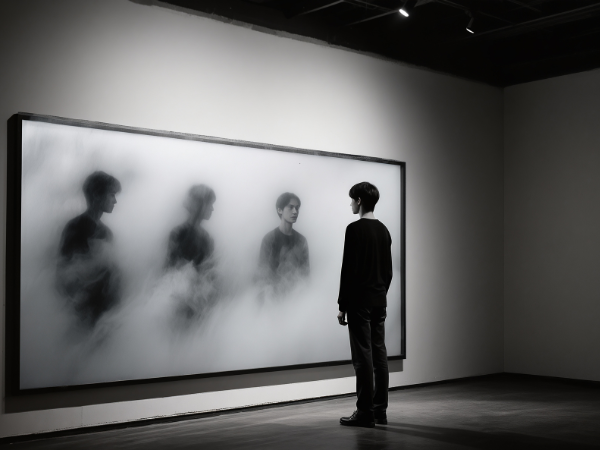Music and visual art have always shared a profound relationship, each influencing and inspiring the other across centuries. While one appeals primarily to the ear and the other to the eye, both are rooted in rhythm, harmony, and emotional expression.
Historical Intersections of Music and Visual Art
From antiquity onward, music and visual art were often intertwined in cultural rituals and religious practices. Ancient Greek philosophers like Plato and Aristotle emphasized harmony as a principle that applied equally to music and visual proportion. In medieval Europe, illuminated manuscripts combined musical notation with intricate visual decoration, reinforcing the sacred unity of sound and image.
Examples of Historical Connections:
- Baroque Era – Caravaggio’s dramatic use of light and shadow parallels the emotional intensity of Bach’s compositions.
- Renaissance – Artists like Leonardo da Vinci studied proportion and harmony, concepts equally vital in polyphonic music.
- Medieval Manuscripts – Visual ornamentation accompanied Gregorian chants, merging sound and sight in worship.
- Classical Greece – Music and sculpture both emphasized mathematical ratios and balance.
These examples show that music and visual art were never isolated disciplines but part of a shared cultural language.
Shared Principles: Rhythm, Harmony, and Composition
Both music and visual art rely on structural principles that guide creation and perception. Rhythm in music corresponds to repetition and pattern in visual art. Harmony in sound finds its parallel in color theory and compositional balance.
Core Shared Principles:
- Rhythm – Musical beats align with visual repetition (e.g., geometric patterns).
- Harmony – Chords in music parallel color harmony in painting.
- Dynamics – Crescendos in music resemble contrasts of light and shadow in art.
- Form – Sonata structure mirrors visual composition in sculpture or architecture.
- Emotion – Both forms evoke mood through sensory cues.
By recognizing these parallels, artists and musicians often borrow techniques from one another, enriching their creative vocabulary.
Music Inspiring Visual Art
Throughout history, music has directly inspired visual artists. Painters, sculptors, and multimedia creators often translate auditory experiences into visual language.
Notable Examples:
- Wassily Kandinsky – Created abstract paintings influenced by musical compositions, believing colors had “sound-like” qualities.
- Romantic Era Artists – Used musical themes to evoke emotion in landscapes and portraits.
- Modern Installations – Multimedia art combines live music with projected visuals for immersive experiences.
- Album Art – Visual design of records and covers reflects the mood of the music.
Music provides artists with rhythm, mood, and narrative, which they reinterpret visually to create synesthetic experiences.
Visual Art Inspiring Music
The influence also flows in the opposite direction. Composers and musicians often draw inspiration from paintings, sculptures, and architecture.
Examples of Visual Art Inspiring Music:
- Modest Mussorgsky’s “Pictures at an Exhibition” – A piano suite inspired by Viktor Hartmann’s artworks.
- Claude Debussy – Influenced by Impressionist painters, translating visual atmospheres into sound.
- Jazz Musicians – Often reference abstract art in improvisation, mirroring visual spontaneity.
- Film Scores – Composers adapt music to match visual storytelling and imagery.
Visual art provides musicians with imagery, symbolism, and atmosphere, shaping how they compose and perform.
Synesthesia: Bridging Sound and Sight
Synesthesia, a neurological condition where senses overlap, has fascinated artists for centuries. Some individuals “see” colors when hearing music or “hear” sounds when viewing art.
Synesthetic Connections:
- Kandinsky – Claimed to hear music when painting, linking colors to tones.
- Scriabin – Composed works with color-light projections to accompany music.
- Modern Multimedia – Digital art installations often simulate synesthetic experiences.
- Psychological Studies – Show that cross-sensory associations enhance creativity.
Synesthesia demonstrates the natural human tendency to connect sound and sight, reinforcing the bond between music and visual art.
Contemporary Collaborations
In the 20th and 21st centuries, collaborations between musicians and visual artists have flourished. Technology has expanded possibilities, allowing immersive experiences that merge sound and image.
Contemporary Examples:
- Music Videos – Blend cinematic visuals with musical storytelling.
- Concert Visuals – Light shows and digital projections enhance live performances.
- Multimedia Installations – Museums and galleries host works combining soundscapes with visual environments.
- Virtual Reality – Offers immersive experiences where music and art coexist interactively.
These collaborations highlight how modern audiences expect multisensory engagement, making the connection between music and art more vital than ever.
The Cultural Impact of Music-Art Connections
The interplay between music and visual art has shaped cultural movements and social identity. From the counterculture album covers of the 1960s to contemporary digital art festivals, these connections influence how societies express themselves.
Cultural Effects:
- Identity – Album covers and concert visuals shape cultural aesthetics.
- Innovation – Cross-disciplinary collaborations push boundaries of creativity.
- Accessibility – Multimedia art makes complex ideas more engaging for diverse audiences.
- Globalization – Digital platforms spread music-art collaborations worldwide.
The cultural impact underscores how deeply intertwined these art forms are in shaping collective memory and identity.




